+Search query
-Structure paper
| Title | Architecture of symbiotic dinoflagellate photosystem I-light-harvesting supercomplex in Symbiodinium. |
|---|---|
| Journal, issue, pages | Nat Commun, Vol. 15, Issue 1, Page 2392, Year 2024 |
| Publish date | Mar 16, 2024 |
 Authors Authors | Long-Sheng Zhao / Ning Wang / Kang Li / Chun-Yang Li / Jian-Ping Guo / Fei-Yu He / Gui-Ming Liu / Xiu-Lan Chen / Jun Gao / Lu-Ning Liu / Yu-Zhong Zhang /   |
| PubMed Abstract | Symbiodinium are the photosynthetic endosymbionts for corals and play a vital role in supplying their coral hosts with photosynthetic products, forming the nutritional foundation for high-yield coral ...Symbiodinium are the photosynthetic endosymbionts for corals and play a vital role in supplying their coral hosts with photosynthetic products, forming the nutritional foundation for high-yield coral reef ecosystems. Here, we determine the cryo-electron microscopy structure of Symbiodinium photosystem I (PSI) supercomplex with a PSI core composed of 13 subunits including 2 previously unidentified subunits, PsaT and PsaU, as well as 13 peridinin-Chl a/c-binding light-harvesting antenna proteins (AcpPCIs). The PSI-AcpPCI supercomplex exhibits distinctive structural features compared to their red lineage counterparts, including extended termini of PsaD/E/I/J/L/M/R and AcpPCI-1/3/5/7/8/11 subunits, conformational changes in the surface loops of PsaA and PsaB subunits, facilitating the association between the PSI core and peripheral antennae. Structural analysis and computational calculation of excitation energy transfer rates unravel specific pigment networks in Symbiodinium PSI-AcpPCI for efficient excitation energy transfer. Overall, this study provides a structural basis for deciphering the mechanisms governing light harvesting and energy transfer in Symbiodinium PSI-AcpPCI supercomplexes adapted to their symbiotic ecosystem, as well as insights into the evolutionary diversity of PSI-LHCI among various photosynthetic organisms. |
 External links External links |  Nat Commun / Nat Commun /  PubMed:38493166 / PubMed:38493166 /  PubMed Central PubMed Central |
| Methods | EM (single particle) |
| Resolution | 2.8 Å |
| Structure data | EMDB-36366, PDB-8jjr: |
| Chemicals | 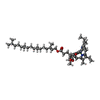 ChemComp-CLA:  ChemComp-KC2: 
ChemComp-UIX:  ChemComp-DD6: 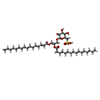 ChemComp-SQD:  ChemComp-PID: 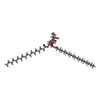 ChemComp-LMG: 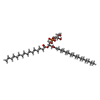 ChemComp-LHG: 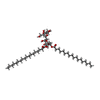 ChemComp-DGD: 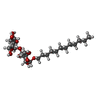 ChemComp-LMU: 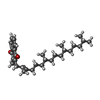 ChemComp-PQN: 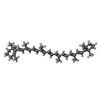 ChemComp-BCR: 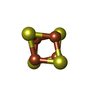 ChemComp-SF4: |
| Source |
|
 Keywords Keywords | PHOTOSYNTHESIS / Symbiodinium / Photosystem I |
 Movie
Movie Controller
Controller Structure viewers
Structure viewers About Yorodumi Papers
About Yorodumi Papers





 symbiodinium sp. (eukaryote)
symbiodinium sp. (eukaryote)